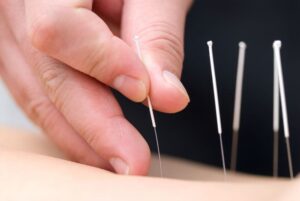Migraine headaches affect millions of people. Are you one of them? If so, you may have heard of the “prodrome” phase. Before a migraine attack, you may have a number of signs, such as changes in your mood, tiredness, and sensitivity to light or sound. But did you know there are ways to deal with the early signs of a migraine and even cut down on how often you get them? In this blog post, we’ll talk about some of the best migraine prodrome treatments and give you tips on how to stop headaches before they start.
One of the most common questions people have about migraine prodrome is how long can the migraine prodrome phase last. It can vary from person to person and even from one migraine to the next. Some people may experience prodrome symptoms for just a few hours, while others may have them for several days before a migraine attack. Regardless of how long your prodrome phase lasts, managing your symptoms can make a big difference in how severe your migraine is. So, without further ado, let’s dive into the best ways to manage migraine prodrome and reduce the frequency and severity of your migraines.
Understanding Migraine Prodrome Symptoms
Migraine prodrome is a neurological condition that affects millions of people worldwide. The prodrome phase is the first of 4 stages of a migraine attack, occurring several hours or days before the headache begins. Understanding the common symptoms of migraine prodrome can help you recognize the signs and take steps to manage your condition before it becomes severe.
The symptoms of migraine prodrome can vary from person to person, but some of the most common symptoms include the following:
- Mood changes – irritability, depression, anxiety, or euphoria
- Fatigue and drowsiness
- Neck stiffness and muscle tension
- Food cravings or aversions
- Increased thirst and frequent urination
- Difficulty concentrating or thinking clearly
- Increased sensitivity to light, sound, or smell
- Triggers that can cause Prodrome Migraine
Moreover, migraine triggers are external or internal factors that can cause a migraine attack. Identifying your triggers is essential in managing migraine prodrome.
Common triggers include:
- Certain foods – aged cheeses, chocolate, alcohol, and caffeine
- Environmental factors – weather changes, bright lights, loud noises, and strong smells
- Hormonal changes – menstrual cycle or menopause
- Stress and anxiety
- Lack of sleep or irregular sleep patterns
- Physical activity or overexertion
- Certain medications
How to Identify Your Migraine Prodrome Triggers
Keeping a migraine diary can help you identify your migraine prodrome triggers. In your diary, record the date and time of your migraine attack, the duration and intensity of the headache, and any symptoms you experience during the prodrome phase. You should also record the food you ate, your sleep patterns, and any other factors that may have triggered your migraine.
The Best Ways to Manage Migraine Prodrome
Managing migraine prodrome involves both medication and lifestyle changes. Below are some of the best ways to manage migraine prodrome:
Over-the-counter (OTC) medications
OTC medications such as ibuprofen, aspirin, napoxen, and acetaminophen can help relieve the pain associated with migraine prodrome. They are most effective when taken early in the prodrome phase. However, overuse of OTC medications can lead to rebound headaches (medication overuse headache).
Prescription medications
Prescription medications can be more effective in treating migraine prodrome and lessening the severity of the subsequent migraine headache than over-the-counter medications. There are several types of prescription medications available for migraine prodrome treatment. These include:
Gepants: Gepants help abort and prevent migraine attacks by blocking the action of a very potent inflammatory protein called CGRP, which is released during a migraine. Most all of the newer migraine abortive and preventive medications in the past several years revolve around targeting CGRP pathways. They help to disrupt the electrical pathways of a migraine attack. They also help to reverse dilation of blood vessels in the brain, which occurs during a migraine. However, they do this without causing vasoconstriction (narrowing), in contrast to the triptans and ergotamines.
A recent study showed that patients who took Ubrogepant 100 mg during the prodrome phase (1-6 hours before headache onset) were 2.1x (45.5% vs. 28.6%) more likely to avoid progressing into moderate to severe migraine pain vs. placebo.
Triptans: Triptans are a group of medications that can relieve migraine symptoms by stopping the electrical pathways of a migraine attack, and helping to constrict and reverse dilation of the blood vessels in the brain which occurs during a migraine. They can be taken in pill form, injection or as a nasal spray. There was a small study done years ago which looked at whether the triptan was more effective taken during the aura phase or headache phase. That study suggested that the most effective time for triptan use was at the earliest sign of any head pain early in the migraine attack rather than at aura. However, more research is needed to clarify this question because theoretically, it would make sense to treat as early as possible, even before the headache phase begins.
Ergotamines: Ergotamines are another group of medications that can relieve migraine symptoms. Dihydroergotamine (DHE) is the most effective ergotamine derivative for migraine treatment, and has a long rich history of effectively aborting migraine attacks. They also work by disrupting the electrical pathways of a migraine attack, and helping to constrict and reverse dilation of the blood vessels in the brain which occurs during a migraine.
Anti-nausea medications: can help alleviate nausea and vomiting associated with migraines. The most effective ones for migraine and nausea are typically metoclopramide, prochlorperazine, and promethazine. Ondansetron is a common one too, but not as helpful for the pain itself in general.
Nonsteroidal anti-inflammatory drugs (NSAIDs): NSAIDs such as naproxen, aspirin, and ibuprofen can help relieve migraine pain. Talking to a healthcare professional before starting any prescription medication is important.
Sleep Habits
Getting enough sleep and maintaining a regular sleep schedule can help prevent migraine prodrome. Aim for 7-8 hours of sleep each night and try to go to bed and wake up at the same time every day. Avoiding caffeine and alcohol before bed and creating a relaxing sleep environment can also help.
Diet and Hydration
Eating a healthy, balanced diet and staying hydrated can help prevent prodromal migraine symptoms. Avoiding trigger foods like caffeine, chocolate, and aged cheeses may also help. It is important to drink plenty of water throughout the day.
Exercise and Physical Activity
Regular exercise and physical activity can help prevent migraine prodrome. Exercise releases endorphins, which can help alleviate pain and improve mood. It is important to start slowly and gradually increase intensity and duration to avoid triggering a migraine. Some studies have shown that a routine exercise program can be as effective as some of the migraine preventive treatments we use.
Stress Management Techniques
Stress is a common trigger for activating migraine prodrome. Practicing stress management techniques such as deep breathing, meditation, and yoga can help prevent migraines. It is also important to take breaks throughout the day and practice self-care.
Prevention Strategies for Migraine Prodrome
Identifying and avoiding triggering factors can help prevent prodromal migraine symptoms. Common triggers include stress, lack of sleep, dehydration, and certain foods. Keeping a migraine diary can help identify trigger factors.
Keeping a Migraine Diary
Keeping a diary for migraine can help identify trigger factors and monitor prodromal migraine symptoms. Record the date and time of the migraine, symptoms, food and drink intake, and any stressors or activities.
Preventive Medications and Therapies
If the migraine attack frequency is averaging 4 or more per month, migraine preventive treatments are often suggested. There are many preventive medicine options as well as neuromodulation treatments, once monthly self injection CGRP monoclonal antibodies, gepants, and Botox (if you are averaging 15 or more headache days per month overall) to name a few.
Cognitive Behavioral Therapy (CBT)
Cognitive Behavioral Therapy (CBT) can help manage migraine prodrome by addressing stress and anxiety. CBT focuses on changing negative thought patterns and behaviors to improve coping skills.
Acupuncture
Acupuncture is a form of alternative medicine that involves inserting very tiny needles into various places on the body. It can help relieve pain and reduce stress.
Herbal Remedies
Some herbal remedies and supplements, such as feverfew and butterbur, have been shown to reduce the frequency and severity of migraines. Talking to a healthcare professional before taking any herbal remedies is important.
When to Seek Professional Help
If migraine prodrome is interfering with daily activities, it may be time to seek professional help. Signs that medical attention is needed include:
- Increasing frequency and severity of migraines
- Migraines that do not respond to over-the-counter medication
- Changes in vision or speech
- Severe nausea or vomiting
Several types of healthcare professionals can help you manage your prodrome migraine, including:
Primary Care Physician (PCP) – A PCP can diagnose and treat your prodromal migraine symptoms. They can also refer you to a specialist if needed.
Neurologist – A neurologist specializes in treating neurological disorders, including migraines. They can provide a thorough evaluation and recommend treatment options.
Headache Specialist – A headache specialist is a neurologist with advanced training and expertise in diagnosing and treating headaches, including migraines. They can offer specialized treatment options and effectively help you manage your prodromal migraine symptoms.
Final Thoughts
With the right treatment plan and techniques, you can deal with the prodromal symptoms before a migraine and reduce how often you get them. By knowing how long the migraine prodrome can last and what causes it, you can take steps to avoid or lessen the severity of your headaches.
Keep in mind that every person’s migraine is different. You may have to try a few different migraine prodrome treatments before you find the one that works best for you. Don’t be afraid to try out different treatments and ways of living until you find what helps you.
IF YOU HAVE HEADACHE, MIGRAINE, OR FACIAL PAIN AND ARE LOOKING FOR ANSWERS ON ANYTHING RELATED TO IT, A HEADACHE SPECIALIST IS HERE TO HELP, FOR FREE!
FIRST, LET’S DECIDE WHERE TO START:
IF YOU HAVE AN EXISTING HEADACHE, MIGRAINE, OR FACIAL PAIN DIAGNOSIS AND ARE LOOKING FOR THE LATEST INFORMATION, HOT TOPICS, AND TREATMENT TIPS, VISIT OUR FREE BLOG OF HOT TOPICS AND HEADACHE TIPS HERE. THIS IS WHERE I WRITE AND CONDENSE A BROAD VARIETY OF COMMON AND COMPLEX MIGRAINE AND HEADACHE RELATED TOPICS INTO THE IMPORTANT FACTS AND HIGHLIGHTS YOU NEED TO KNOW, ALONG WITH PROVIDING FIRST HAND CLINICAL EXPERIENCE FROM THE PERSPECTIVE OF A HEADACHE SPECIALIST.
IF YOU DON’T HAVE AN EXISTING HEADACHE, MIGRAINE, OR FACIAL PAIN DIAGNOSIS AND ARE LOOKING FOR POSSIBLE TYPES OF HEADACHES OR FACIAL PAINS BASED ON YOUR SYMPTOMS, USE THE FREE HEADACHE AND FACIAL PAIN SYMPTOM CHECKER TOOL DEVELOPED BY A HEADACHE SPECIALIST NEUROLOGIST HERE!
IF YOU HAVE AN EXISTING HEADACHE, MIGRAINE, OR FACIAL PAIN DIAGNOSIS AND ARE LOOKING FOR FURTHER EDUCATION AND SELF-RESEARCH ON YOUR DIAGNOSIS, VISIT OUR FREE EDUCATION CENTER HERE.













